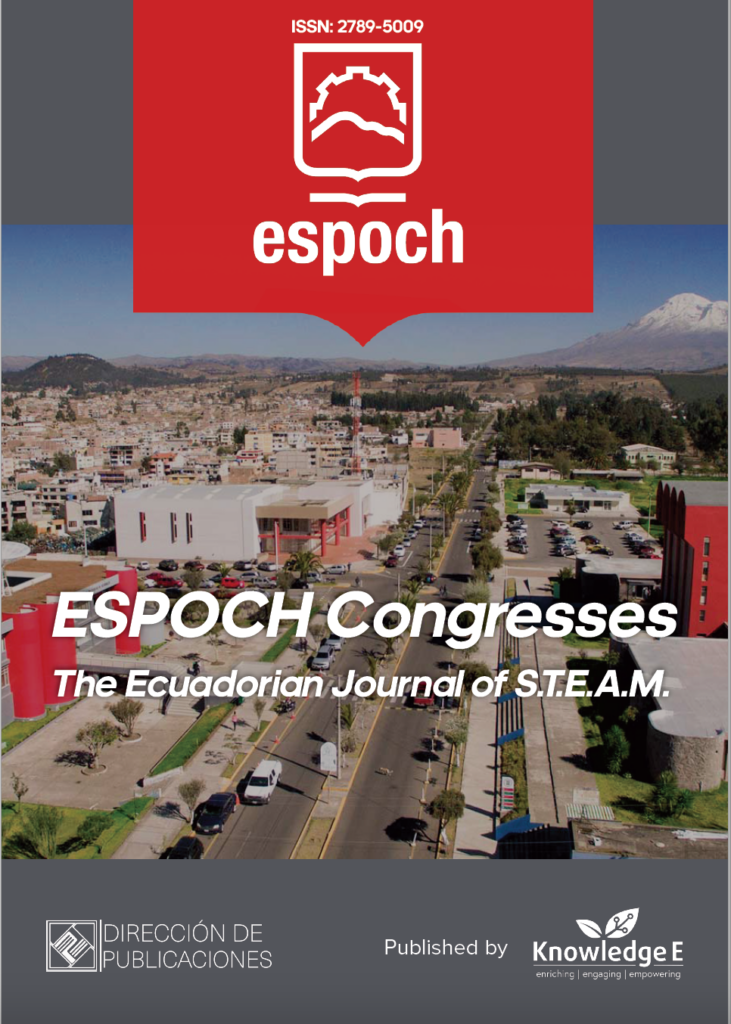
ESPOCH Congresses: The Ecuadorian Journal of S.T.E.A.M.
ISSN: 2789-5009
Leading Ecuadorian research in science, technology, engineering, arts, and mathematics.
Prototype of Automated Machine for the Packaging of Water Drums
Published date:Aug 31 2022
Journal Title: ESPOCH Congresses: The Ecuadorian Journal of S.T.E.A.M.
Issue title: Volume 2, Issue 4
Pages:1174 - 1188
Authors:
Abstract:
The purpose of this study was to make a prototype for the packaging of water in drums in the city of Riobamba, Ecuador. It started with the mechanical design and the structural analysis of the drum structure using the SolidWorks software, followed by the selection of elements for the construction of the prototype, and the automation of the process using Siemens LOGO 8. Using a free software LOGO SOFT from the same line of the same manufacturer, it was proceeded to elaborate the programming by blocks. Next, the filling process was analyzed and a heat tunnel was designed. The heat tunnel comprised a structure incorporated with a pneumatic cylinder, allowing the vertical movement of the rod of coupling with the drum. Finally, the test results were registered which showed that 8220 drums of water can be packed in a month. The data from the field tests showed that a misadjustment was produced in the niquelina nozzles of the drums. The replacement of the nickeline nozzles with halogen lamps as a new system can prevent unplanned stops in the production line. An analysis of the point of balance of the prototype was realized, where it was established that a total 29,793.37 units must be packed annually so that the project does not generate an economic loss to the company.
Keywords: automation, productivity, drums, water, logo.
Resumen
El propósito del trabajo es realizar un prototipo para el envase de agua en bidones en la ciudad de Riobamba, se inicia con el diseño mecánico de su estructura por medio de la utilización del software SolidWorks donde se hace el análisis estructural, luego la selección de elementos para la construcción del prototipo, finalmente se realiza la automatización del proceso empleando LOGO 8 marca Siemens; donde utilizando un software libre LOGO SOFT de la misma línea del fabricante, se procede a elaborar la programación por bloques, a continuación se efectúa el análisis del proceso de llenado donde se diseña un túnel de calor que consta de una estructura donde se incorpora un cilindro neumático permitiendo que el movimiento vertical del vástago de acople con el bidón y finalmente se registra las pruebas en la que se consigue mensualmente envasar 8220 bidones de agua. En las pruebas realizadas en campo se toman los datos del funcionamiento y se determinó que en el sellado se producía un desajuste en las boquillas de niquelinas en el sellado del recipiente de los bidones de envase del agua, sustituyendo dicho elemento para corregir por lámparas halógenas como nuevo sistema evitando posibles paros en la línea de producción, finalmente se realiza un análisis del punto de equilibrio del prototipo donde se llega a establecer que se debe envasar un total 29793.37 unidades anualmente para que el proyecto no genere pérdidas económicas en la empresa.
Palabras Clave: automatización, productividad, bidones, agua, logo.
References:
[1] Camara y Comercio de Medellin. 2018. Automatización de los procesos industriales. Buenas Practicas empresariales [Internet]. 2018. p. 123–131. Available from: http://herramientas.camaramedellin.com.co/Inicio/Buenaspracticasempresariales/ BibliotecaProducciónyOperaciones/Automatizaciondelosprocesosindustriales.aspx
[2] Punina APC. Globalización: Revolución industrial y sociedad de la información. Revista CIENCIA [Internet]. 2017;19:269–284. Available from: https://scholar. googleusercontent.com/scholar?q=cache:eKECBWt6tz4J:scholar.google.com/ +la+primera+revolución+industrial+se+da+por+el+uso+de+las+máquinas+con+la+máquina+de+vapor+como+principal+invento(siglo+XVIII).+Luego+aparece+la+segunda+r
[3] Córdoba Nieto E. Manufactura y automatización. Revista Ingeniería e Investigación [Internet]. 2006;26(3):120–128. Available from: http://revistas.unal.edu.co/index.php/ingeinv/article/view/14761
[4] Supelano KL. Modelo de automatización de procesos para un sistema de gestión a partir de un esquema de documentación basado en Business Process Management (bpm). Revista Universidad y Empresa. 2015;17(29):131–155.
[5] Molina A, Pozo M, Serrano J. Agua, saneamiento e higiene: Medición de los ODS en Ecuador. NEC & UNICEF [Internet]; 2018.
[6] Quintero OL, Medina H, Pineda EA. Automation for dosing reactives in coal classification. Visión Electrónica [Internet]. 2017;11(1):45–54.